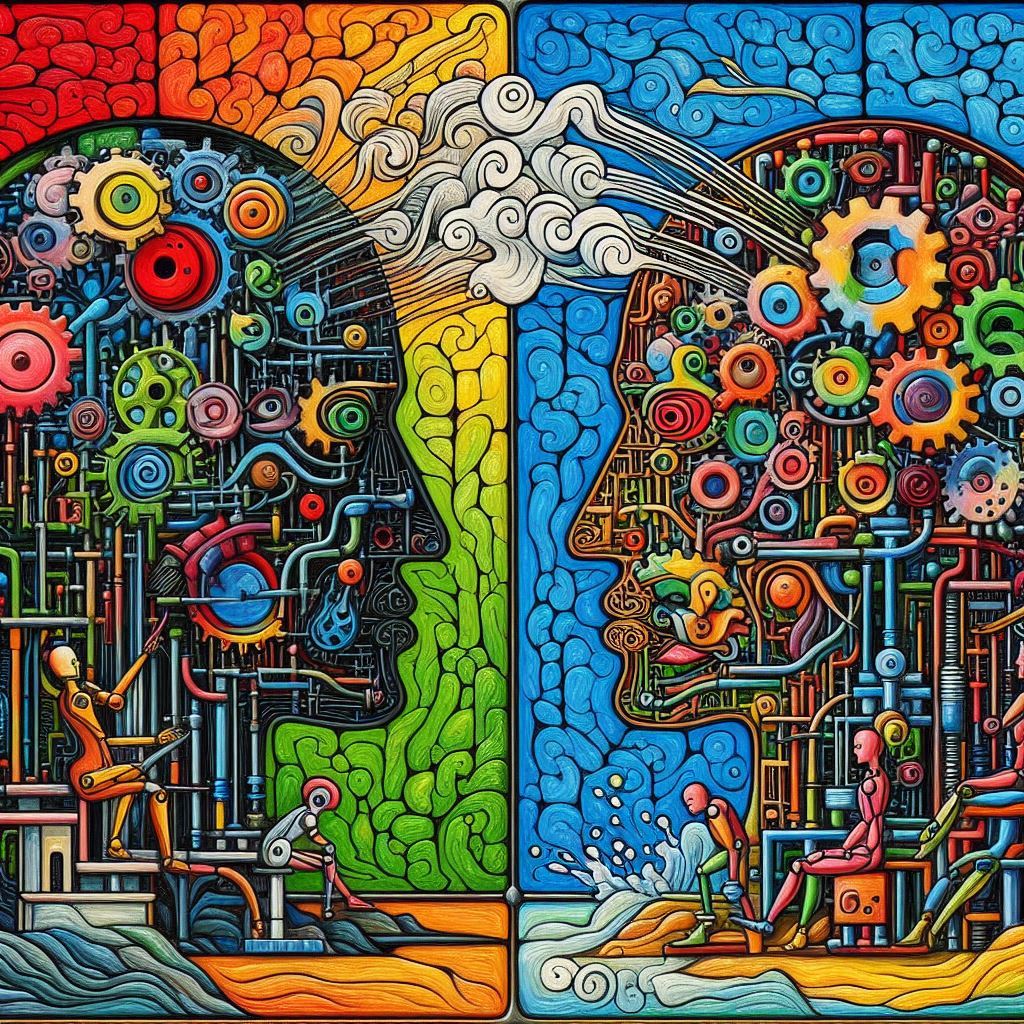Generative AI and NLG: Are They the Same?
Technology is advancing rapidly. “Generative AI” and “NLG” are becoming more popular. But are they the same thing? They both use AI and generate language. However, there are important differences between them. Understanding these differences can help you use each technology effectively.
Are Generative AI and NLG the same? Or are there differences that make them unique? Let’s explore AI and language generation to uncover the answer.
What Is Machine Writing?
Understanding Generative AI
Generative AI uses AI programming to create human-like content.
For example, natural language generation (NLG) uses AI algorithms to generate narratives and enhance natural language processing (NLP) models. Generative AI plays a role in industrial virtual assistants, multilingual media publications, personalized experiences, and accelerated data operations. Machines learn our language through NLP, identifying meaning, intention, and emotion in text. They use methodologies like recurrent neural network (RNN), long short-term memory (LSTM), and Transformer. This helps them understand us through abstract mathematics, linguistics, named-entity recognition, deep learning, and statistical models. This paves the way for applications like content creation, chatbots, virtual assistants, and language translation – all contributing to navigating the digital age.
How Does Creating with AI Work?
Machines learn language through natural language generation using AI programming. This means generating narratives from a dataset based on language rules and grammar.
The building blocks for machine writing with AI include NLG models like Markov chain, recurrent neural network, long short-term memory, and Transformer. These models help machines learn human language patterns, creating coherent content.
This technology is crucial in various applications, such as content creation, chatbots, virtual assistants, and language translation. It’s also essential for providing personalized experiences, publishing multilingual media, and accelerating industry data operations.
Understanding abstract mathematics, linguistics, named-entity recognition, deep learning, and statistical models is necessary for integrating these technologies effectively in the digital age.
Generative AI In Our World: What Does It Do?

Generative AI has many practical uses in daily life. It’s beneficial for content creation and communication. Industries benefit from tools like virtual assistants, multilingual media, personalized experiences, and faster data operations. Generative AI also boosts productivity and efficiency in writing and language tasks. It helps create content, develop chatbots, and translate languages so human resources can focus on higher-level tasks.
Machine Writing vs. Machine Understanding

How Machines Learn Our Language
Machines learn to understand and use human languages. This happens through natural language processing and natural language generation. NLP teaches machines to interpret and derive meaning from human languages. On the other hand, NLG involves using AI programming to generate narratives from a given data set. These methods enable machines to analyze and understand human language’s structure, syntax, and semantics.
This allows machines to produce coherent and contextually relevant sentences.
Tools and building blocks are utilized to improve machine writing capabilities. These include advanced machine learning algorithms such as Markov chain, recurrent neural network, long short-term memory, and Transformer. These methodologies allow machines to learn and recognize patterns, context, and linguistic nuances within human language, resulting in more accurate and fluent language generation.
Additionally, knowledge of abstract mathematics, linguistics, named-entity recognition, deep learning, and statistical models enhances machine writing capabilities.
By integrating NLP and NLG, machines can effectively interpret, understand, and generate human language. This paves the way for various applications such as content creation, chatbots, virtual assistants, and language translation.
Teaching Machines to Understand Us
Teaching machines to understand human language and communication involves using natural language generation and natural language processing. This helps generate narratives from a data set, identify meaning, intention, and emotion in textual content, and create new data resembling human-created data.
Essential methods and techniques include NLG models like Markov chain, recurrent neural network, long short-term memory, and Transformer. Other techniques involve abstract mathematics, linguistics, named-entity recognition, deep learning, and statistical models.
Potential applications and implications of machines understanding human language include industrial virtual assistants, multilingual media publication, personalized experiences, accelerated data operations, content creation, chatbots, virtual assistants, language translation, and creative arts.
Generative AI and NLP have wide-ranging applications in navigating the digital age, enhancing NLP models, and offering complex prompts akin to creative human feedback, contributing to the effective use of these technologies.
Making Machines Create Words and Sentences
Machines learn our language.
They are taught to understand us through natural language generation using AI programming.
This involves synthesizing human language based on patterns and data.
Machines use building blocks and tools such as the Markov chain, recurrent neural network, long-short-term memory, and transformer to write better and produce coherent words and sentences.
These methodologies enable machines to generate narratives resembling human-created data.
The difference between machine writing and machine understanding lies in the output and input processes.
While natural language generation focuses on creating words and sentences based on data patterns, natural language understanding (NLU) involves identifying meaning, intention, and emotion in textual content.
Machines create words and sentences in each context by analyzing and processing data to generate new, original content.
This integration of generative AI and NLP effectively enhances models and technologies, leading to various applications such as content creation, chatbots, virtual assistants, language translation, and creative arts.
When Machines Talk and Write
Machine writing, or natural language generation, uses AI programming to create stories from data. This allows machines to produce human-like text automatically. One approach uses NLG models like Markov chain, recurrent neural network, long short-term memory, and Transformer. These models help machines generate coherent and contextually relevant text for various applications.
Generative AI powers industrial virtual assistants, multilingual media, personalized experiences, and accelerated data operations. It’s used in content creation, chatbots, virtual assistants, language translation, and creative arts.
These applications show how generative AI enhances natural language processing models, offering specific and complex prompts similar to creative human input. Integrating generative AI and NLP requires knowledge of abstract mathematics, linguistics, named-entity recognition, deep learning, and statistical models for success in the digital age.
Tools for Machines to Write Better

Building Blocks for Machine Writing
The building blocks for machine writing involve natural language generation (NLG), a process that uses AI programming to generate narratives from a data set.
Different models and methodologies, such as the Markov chain, recurrent neural network, long short-term memory, and Transformer, contribute to this process. They allow machines to understand, learn, and replicate human language patterns.
Machines learn our language through generative AI and natural language processing. Generative AI algorithms generate new data similar to human-created data. NLP helps identify meaning, intention, and emotion in textual content.
By integrating both technologies, machines can create original and coherent sentences and paragraphs, learning to write like humans.
Machines can use various tools, including industrial virtual assistants, personalized experiences, and language translation, to improve their writing capabilities. Additionally, knowledge of abstract mathematics, linguistics, named-entity recognition, deep learning, and statistical models is essential for machines to navigate the digital age and produce high-quality writing.

Vizologi is a revolutionary AI-generated business strategy tool that offers its users access to advanced features to create and refine start-up ideas quickly.
It generates limitless business ideas, gains insights on markets and competitors, and automates business plan creation.


